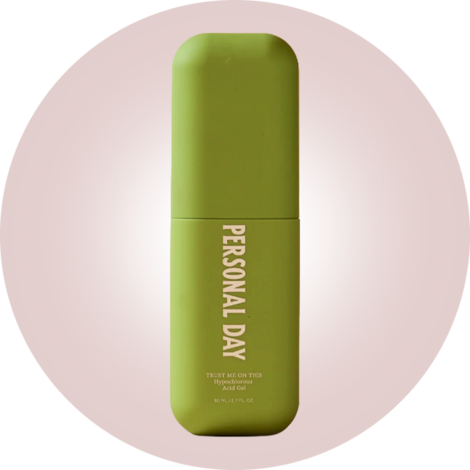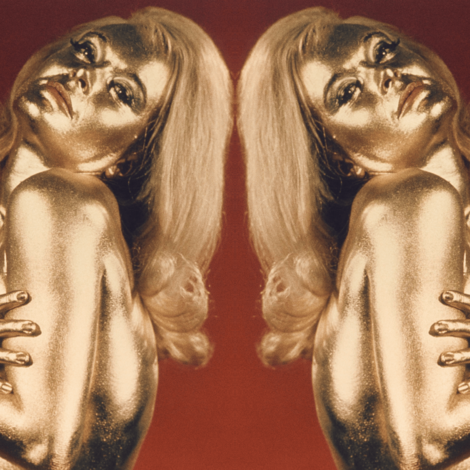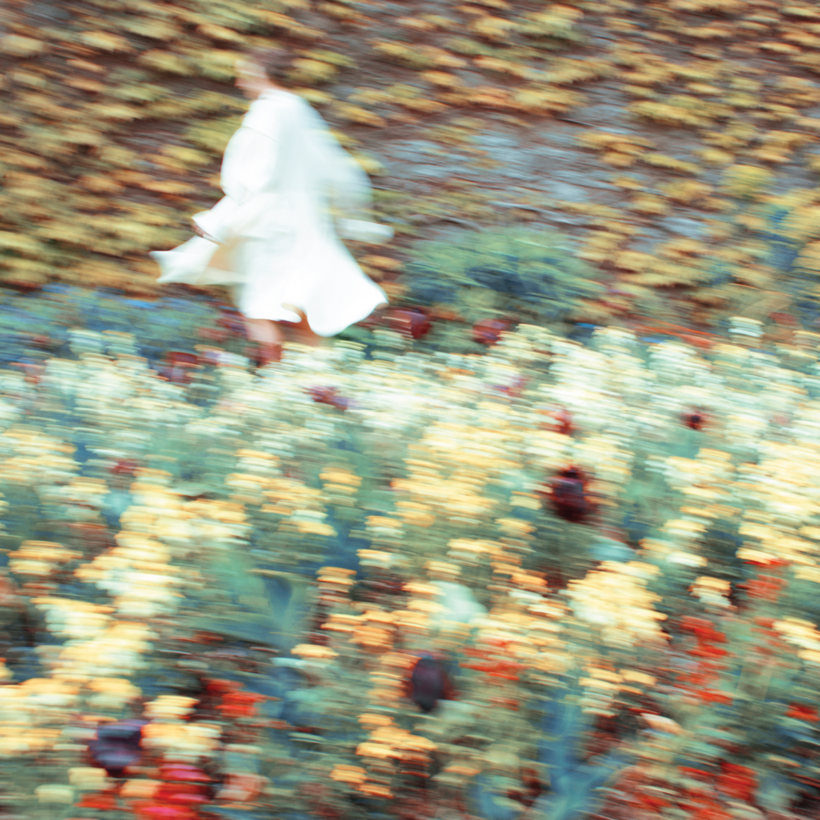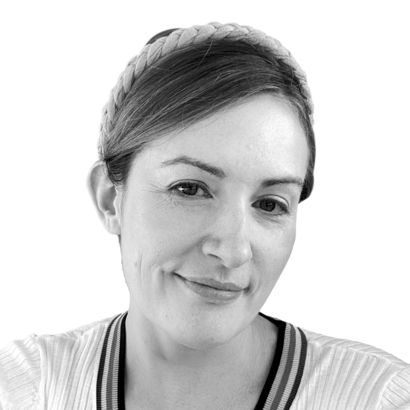Naturally, there’s spring, summer, autumn, and winter. But also sultry winter, golden spring, and leafy autumn. Some people call golden spring “true spring,” and “cool summer” is synonymous with “soft summer.” Light winter and deep autumn are sister seasons, which means they share some colors. I think. It’s hard to keep track. Also, I’ve gone a tad insane.
In case you haven’t descended down the rabbit hole, as I have, these are color seasons. The theory was an 80s phenom predicated on Carole Jackson’s best-selling book, Color Me Beautiful. Basically, the theory is that every person has a set of colors that best flatters their natural features—and another, it follows, that lends them the sickly pall of a sewer goblin. I vaguely remember my mom proclaiming, at some point in my childhood, that she was a winter (typically somebody with dark hair and cool skin) and I (a pink-faced blonde) was a spring.
Color seasons are back, thanks to the section of social media dedicated to hair and face filters—basically, the “What if I could be hotter?” slice of the Internet. They’re also bigger than ever. That may sound like a movie tagline, but I mean it literally: where there used to be 4 seasons, there are now 12, because each of them, like a stately old house gone condominium, has been divided into three sub-seasons. Winter and summer are the “cool” ones. Spring and autumn are the “warm” ones. If this sounds counter-intuitive, keep in mind that “cool” and “warm” refer to the undertone of one’s skin. Which is apparently completely separate from one’s overtone, but after asking three different experts, I still don’t understand why.

This summer, on TikTok, I noticed a lot of young women sticking their faces into filters that made them look like they were trapped in a kaleidoscope. Do you see how the bright colors wash me out? Wow, look how the muted cools smooth out my complexion. Most of the time, I didn’t see it. Often, I thought the opposite color palette looked better. But then I would read the hundreds of comments from other users echoing the transformative power of certain colors and decide I just must not be seeing it yet. From there it was only a short, multi-hour, obsessive scroll to: I must do this myself.
I tried sticking my face into the TikTok rainbows. I texted the pictures—which looked very much like flyers for a community-theater production of Joseph and the Amazing Technicolor Dreamcoat starring … me—to friends and family, who gave helpful advice such as “I can’t tell” or “What is this?” or “I don’t really know what I’m looking for.” And after I’d sent one too many, “Unsubscribe pls.” So I moved on to an A.I. version, using Colorwise.me. You upload a picture, pinpointing your skin, eye, and hair color for the algorithm to analyze, and then you’re taken to a grid of your best and worst colors. I made it a party trick. Whipped it out at a family gathering. My mom confidently predicted almost everyone’s color season correctly before I even ran the app on them. Everyone, that is, except for me. The one person treating this with the utmost seriousness. She insisted I was a spring, just as she had when I was 12. But the app disagreed, bouncing me back and forth between a summer and an autumn, depending on whether I highlighted my natural hair color (eyebrow) or strawberry-blond head hair (salon-created.) My mom just shook her head and poured herself more wine. “You’re a spring.”
Color seasons are back, thanks to the section of social media dedicated to hair and face filters—basically, the “What if I could be hotter?” slice of the Internet.
Here’s the thing. Autumn and summer are complete opposites. Summers are supposed to wear muted pastels and have cool-toned hair, and autumns are supposed to do the opposite. At this point in the journey, I was worried I had been dyeing my hair the wrong color my whole life and inadvertently making myself ugly. I’d been staying up late at night watching Instagram reels of color analysts who posted celebrity-color analyses, showcasing, say, Emma Stone looking “washed out” in gray and black and then alternately radiant in bright-red and pink. I wasn’t the only one watching—these analysts, who, oddly, mostly seemed to be based in the U.K., had hundreds of thousands of followers. They warned that the A.I. apps weren’t accurate. They also all conveniently offered online services: if you sent them five pictures of your face with no makeup and good light, they’d send you your season and a portfolio of your best colors, along with hair and jewelry recommendations.
Obviously, I did it. I used Curate Your Style. It cost me $40. Within 24 hours they e-mailed me back my results, confirming my worst fear: I was a soft summer. My beloved gold jewelry had to go. Worse, I’d been dyeing my hair red for years now, which was apparently completely out of harmony with my natural coloring. They sent me a PDF displaying a rather unflattering close-up of my face next to all my “power colors.” Muted grays. Dusty mauves. Nothing close to what I had in my closet. I ordered a pair of silver hoops from Amazon and forced myself to wear them daily. I used TikTok to experiment with ash-brown hair colors and showed a pic to my hairstylist, Nancy, who kindly said, “No, sweetie. I wouldn’t do this.” I’m embarrassed to say I cried.

Then doubt started creeping in. As Nancy pointed out, if I couldn’t actually pull off red hair—if it was actually out of harmony with my skin tone—why did it look so natural on me? True, she had a stake in the matter, but still, I think my family and friends would’ve said something if I’d been flitting around with the wrong hair color for a decade. I needed a second opinion. I sent the same exact photos to another Instagram-famous stylist, Francesca Cairns. This one cost me $110. She got back to me within a day. According to her analysis, I was a true autumn.
Now I was mad. I’d spent more than a hundred bucks to have two different experts tell me two different things. Why wasn’t there any sort of consensus on what would make me hotter? I e-mailed both of them, telling them of the other’s analysis. The analysts at Curate Your Style put together what could only be called a refutation package, where they put autumn colors next to my face with a big, red X mark. O.K. Francesca stood strong and simply stated that the competition was wrong. I had way too much warmth in my skin to be a summer. O.K.
At this point in the journey, I was worried I had been dyeing my hair the wrong color my whole life and inadvertently making myself ugly.
There was only one thing left to do: Get draped. In person. Maybe you’ve seen the videos. A color analyst sweeps colored scarf after scarf over you to see which tones bring out the best in your complexion and features. The process takes two hours. After some research, I found an analyst, Heidi, of House of Colour, who operated out of West Los Angeles. I booked a session for a Tuesday afternoon. It cost $325.
We met in her art studio. Heidi explained that the entire season theory was based on an observation by a Swiss artist named Johannes Itten, who noticed that his art students gravitated toward paints that matched their personal coloring. Then she sat me in natural light and wrapped a large white smock around my neck and another one over my hair. The result was very Handmaid’s Tale. Then she layered more than a dozen scarves over my neck and started removing them one by one, quietly observing their effects.
Why wasn’t there any sort of consensus on what would make me hotter?
After a few silent rounds, she started seeing some things. Did I notice how the cool pink made my lips look a little blue? Now look at how the warm brown smooths out the circles under my eyes. At first I didn’t see it, and then I started to. Or at least I convinced myself I did. The cool colors were less flattering. I was definitely warm-toned. Praise be, I thought, true to handmaiden form.
Then came the hard part: Which of the warm seasons was I—autumn or spring? Heidi layered on alternating spring and autumn scarves, removing one at a time. I liked some autumn colors and some spring colors. We did it maybe four or five times. The autumn colors weren’t bad, but Heidi thought they looked “heavy” on me. The final verdict: I was a spring. A golden spring, in fact—the springiest of springs. I finally saw it. She draped my “wow” colors over my shoulder all at once. I looked like a Unitarian minister. A very glow-y one.

Mainly, I was relieved. Mostly because I didn’t have to change my hair color. Heidi gave me a color fan with all my “yes” colors to take shopping with me, which, in the euphoric aftermath of my diagnosis, seemed like a real thing I might do. I was instructed to go home and rid my wardrobe of any colors that didn’t fit into my palette. Heidi suggests spending two straight weeks wearing only your color palette so you can really see the difference and get used to the colors. After you live it, you’ll never want to wear anything else.
But when I woke up the next day and took my color fan to my closet with me to get dressed, I felt more exhausted than excited by it all. I didn’t want to get rid of all my black shirts, which, according to spring rules, I should. And even though I could see that coral and turquoise—two of my wow colors—looked very nice on me, I didn’t want to wear coral and turquoise. I don’t own coral or turquoise. My best colors, unfortunately, are very Boca Raton retiree, style-wise. And I definitely didn’t want to take a large color fan to a store and hold it up to various clothing items. In the light of morning, that seemed incredibly embarrassing.
Maybe it was enough that after two months of trying to figure out my season, I had. (Knowledge is power, etc.) I’ve made some small changes. I bought a brown coat for winter, where normally I’d go with black or gray. The brown does make me look brighter. I see it. I also bought a peach-toned blush, which I think does me a lot of favors. And I’ve started listening to my mom more. Turns out moms are usually right.
Lauren Bans is a television writer living in Los Angeles





